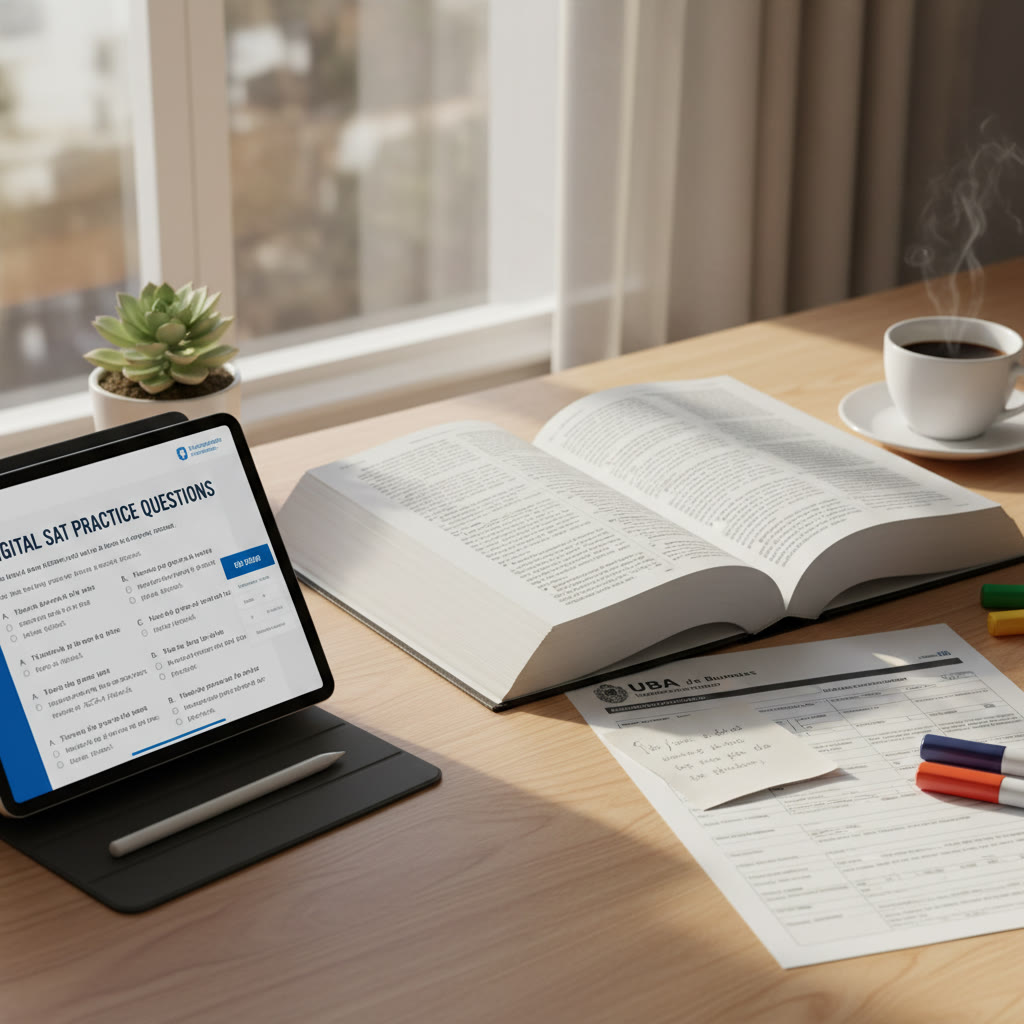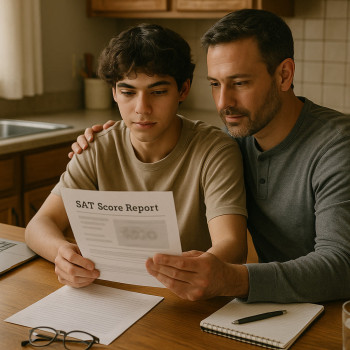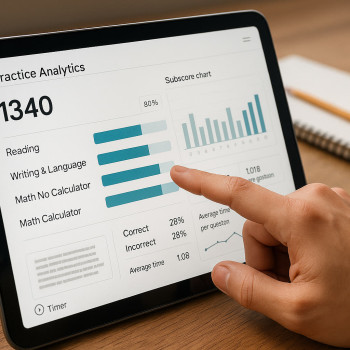Does the University of Buenos Aires (UBA) require the SAT?
If you’re a student — or a parent of a student — planning an application to the University of Buenos Aires (Universidad de Buenos Aires, often called UBA), the SAT question is one of the first to pop up. Let’s get straight to it in plain language: UBA’s admissions system is largely driven by its own national/regional processes and its internal entrance requirements; it typically does not require the SAT as a universal application component in the way many U.S. colleges do.
That said, things are rarely one-size-fits-all in international admissions. Visa rules, specific programs, scholarship applications, or bilateral agreements can sometimes request evidence of academic readiness that an SAT score can strengthen. So while the SAT is usually not a mandatory gate to get into the majority of programs at UBA, holding a strong SAT score can still be a useful asset for certain circumstances — as a supplemental credential, for scholarship competitions, or when applying to joint programs or U.S.-style exchange tracks.

Why UBA’s admissions feel different from U.S. colleges
Understanding UBA requires a small mindset shift. Many universities in Latin America (including UBA) use national or university-specific admission systems — often entrance exams (exámenes de ingreso), curriculum checks, or documentation reviews — rather than the holistic U.S. model that weighs SAT/ACT, essays, extracurriculars, and recommendations together. Here are the key differences:
- Entrance-focused vs. profile-focused: UBA historically emphasizes entrance exams, preparatory certification, or proof of secondary education completion rather than standardized test scores as a central requirement.
- Program-centric requirements: Some faculties within UBA (for example medicine, engineering, social sciences) have their own specific admissions norms.
- Language and credential evaluation: Spanish proficiency and validated transcripts are often more critical than an SAT score.
What this means for international applicants
If you’re applying from outside Argentina, expect to work on three pillars: (1) meeting UBA’s academic credential standards, (2) demonstrating Spanish language ability when required, and (3) following any particular program-specific steps (e.g., preparatory courses or registration for ingreso tests). If you’re bringing an international secondary credential, the faculty’s admissions office will want to know how it maps onto Argentine secondary education.
When an SAT score can still help
Even if the SAT isn’t mandatory for most UBA programs, there are practical scenarios where it can help you stand out or simplify processes:
- Supplemental evidence of academic ability: A strong SAT score can be persuasive when a committee wants an additional, internationally recognized benchmark.
- Scholarships and exchange programs: Some international scholarship bodies or exchange initiatives value or require SAT scores.
- Transfer or joint-degree contexts: If you plan to study partly in the U.S. and partly at UBA, or if you’re applying to programs with international partners, SAT results may smooth administrative steps.
- English-taught or double-degree programs: Programs that use English or follow an international curriculum may request or welcome SAT evidence.
Practical checklist for applicants targeting UBA
Whether you plan to take the SAT or not, this checklist will help you stay organized and give you options if the need for standardized testing appears.
- Confirm the exact admissions rules with the specific faculty (Facultad) at UBA where you plan to apply — medicine, law, engineering, etc., often differ.
- Gather and validate secondary school transcripts and diplomas; know how to legalize or apostille them if required.
- Check language requirements. If instruction or exams are in Spanish, you may need to demonstrate proficiency.
- Ask about ingreso exams or orientation/bridge courses for international students.
- Decide whether you’ll take the SAT (Digital SAT) as an extra credential — good reasons include scholarship eligibility or a future plan to transfer to or from a U.S. university.
- Plan timelines carefully: application windows, exam dates, document legalization, and visa steps all take time.
Example timeline for an international applicant (one academic year before start)
| Months before program start | To-do items |
|---|---|
| 12–10 months | Research faculty-specific requirements; decide whether to take the SAT; begin gathering school transcripts. |
| 9–6 months | Take language tests if needed; register for SAT if chosen; start document legalization/apostille process. |
| 5–3 months | Finish any required translations, submit applications to UBA faculty, finalize financial documentation and visa paperwork. |
| 2–0 months | Receive admission decision; prepare for travel and housing; complete enrollment and orientation steps. |
How to prepare if you choose to take the Digital SAT
Preparing for the SAT is both tactical and strategic — more than memorizing formulas, it’s about sharpening test-taking habits, timing, and clarity of thought. If you opt to take the Digital SAT to strengthen your portfolio for UBA admissions, here’s a focused plan:
- Set a target score: Choose a realistic target that complements your GPA and application goals.
- Practice digitally: The Digital SAT experience is different from paper — take official practice tests on devices to get comfortable.
- Focus on weak spots: Use diagnostic tests to find patterns in your mistakes and concentrate study time there.
- Time management drills: Simulate the test’s timing repeatedly so pacing becomes automatic.
- Review fundamentals: For evidence-based reading, practice active reading and inference. For math, prioritize conceptual mastery and problem selection strategies.
For personalized help, targeted plans, and ongoing accountability, many students benefit from 1-on-1 tutoring. Sparkl’s personalized tutoring — including tailored study plans, expert tutors, and AI-driven insights — fits naturally here: if you want individualized pacing, feedback on practice tests, and strategies that align with both SAT and UBA expectations, Sparkl can help build a plan that suits your goals and timeline.
Documents you’ll typically need for UBA admission
Documentation can vary by faculty and student origin country, but here are common items international applicants should prepare:
- Official secondary school diploma and transcripts, with translations if necessary.
- Apostille or legalization as required by Argentine authorities.
- Proof of identity (passport) and passport-size photos.
- Completed application forms for the specific UBA faculty.
- Proof of Spanish proficiency if the program requires it.
- Any supporting documents requested for scholarships, financial aid, or special programs.
Tip on translations and apostilles
Start these processes early. Translating and legalizing documents often takes weeks. A small delay in certification can push back enrollment, so build buffer time into your schedule.
Language expectations and bridging pathways
UBA primarily teaches in Spanish. If your preparatory education was in another language, you will likely need to show Spanish language ability or take preparatory language coursework. Some faculties or international programs may run certain modules in English; verify these details with the faculty you’re targeting.
How to make your application stand out — without relying on the SAT
If the SAT is optional or not requested, your application can still shine in other ways. Here are practical, authentic ways to strengthen your candidacy:
- Strong academic record: Solid grades in relevant subjects are fundamental, especially in the final years of secondary school.
- Relevant coursework: If possible, take courses or show coursework that aligns with your intended faculty (e.g., advanced math for engineering).
- Clear motivation statement: Some faculties value a clear, sincere statement of interest that shows why you’re a fit.
- Spanish proficiency: Demonstrated language ability is a huge plus and sometimes necessary for success in coursework and exams.
- Letters or proof of experience: Internships, research experience, or community projects that align with your intended field can add depth.
Comparing pathways: SAT route vs. local entrance exams
How do you decide whether to invest time in the SAT or focus on local requirements? Here’s a side-by-side snapshot to help you choose.
| Consideration | Relying on SAT | Focusing on UBA/local requirements |
|---|---|---|
| Primary purpose | Supplemental international benchmark | Direct admission requirement |
| Time & cost | Requires registration, prep time, and potential test fees | May require time for ingreso prep or document legalization; lower test fees locally |
| Strategic value | Good for scholarships, exchanges, or U.S.-linked opportunities | Essential for meeting the faculty’s formal admission rules |
| Language advantage | English-based; useful if you’re also applying abroad | Spanish-based: directly prepares you for Argentine instruction |
Real-world examples and scenarios
Let’s ground the guidance with a few realistic scenarios so you can picture what an applicant’s path might look like:
- Scenario A — Direct international applicant to UBA’s Faculty of Social Sciences: Maria finishes high school with strong grades, demonstrates Spanish fluency, completes required document legalization, and applies directly. She doesn’t send an SAT score because the faculty prioritizes entrance steps and her transcript.
- Scenario B — Student seeking a scholarship for joint study: Javier applies to a bilateral program that partners UBA and a U.S. university; the scholarship committee asks for an internationally comparable test score. Javier takes the Digital SAT to increase competitiveness and pairs it with a strong statement of purpose.
- Scenario C — Transfer to UBA from a U.S. community college: Lina has SAT scores on file, but the UBA faculty needs course-by-course credential evaluation and an equivalency for the related subjects. Her SAT is useful but not sufficient on its own; she works with her advisors to supply the required documentation.
How Sparkl can fit into your UBA application journey
Preparing for university admissions across borders is tricky — timelines, document rules, and test options can feel overwhelming. Sparkl offers tailored, 1-on-1 guidance that can be especially helpful in several ways:
- Personalized study plans: Sparkl tutors can build a schedule that balances Digital SAT practice (if you choose that route) with Spanish language strengthening and faculty-specific entrance prep.
- Expert tutors: Tutors experienced with international admissions can help you target the exact skills admissions officers at UBA expect.
- AI-driven insights: Diagnostic tools can reveal where to invest study hours for the most score improvement or most application impact.
- Practical application coaching: Beyond test prep, Sparkl’s advisors can help you assemble documents, improve your motivation statement, and plan timelines.
Common pitfalls and how to avoid them
International applications can misfire because of small but avoidable mistakes. Here’s what to watch out for and how to fix it:
- Assuming uniform requirements: Don’t assume every faculty at UBA accepts the same documents — always confirm with the specific faculty office.
- Last-minute apostilles/translations: Start these early; consular and translation services can have long queues.
- Ignoring language prep: If the program is in Spanish, invest in language readiness — it impacts exams, coursework, and daily life.
- Not validating international credentials: Track how your home-country diploma maps to Argentine secondary-education equivalence and get formal certificates if needed.
Final checklist before you press submit
Use this final checklist to make sure nothing slips through the cracks before you submit your UBA application:
- Confirm faculty-specific admissions requirements and deadlines.
- Have all diplomas and transcripts translated and apostilled as required.
- If submitting an SAT, ensure scores are sent and align with your application timeline.
- Prepare a clear statement of purpose or motivation note tailored to the faculty.
- Confirm visa and enrollment steps once an admission offer is received.

Parting thoughts — turn the complexity into confidence
Applying to the University of Buenos Aires as an international student may at first seem like navigating two worlds: the Argentine university system and the habits you may know from U.S. college admissions. The good news is that with a clear plan, proper documentation, and targeted preparation you can confidently present a strong application — with or without an SAT score.
If you choose to take the Digital SAT, treat it as a strategic asset rather than a must-have. And if you choose not to — invest your energy in language readiness and in demonstrating strong academic preparation through validated credentials and a compelling motivation letter.
Finally, remember that help is available. Personalized tutoring and planning—such as Sparkl’s 1-on-1 guidance, tailored study plans, expert tutors, and AI-driven insights—can reduce stress and increase clarity. Whether you’re refining a study schedule, polishing an application, or deciding whether to take the SAT at all, guided support can make a measurable difference.
The University of Buenos Aires is an incredible place to study — rich in history, intellectual life, and cultural energy. Approach your application step by step, and let curiosity, preparation, and a calm timeline lead the way. Buena suerte — good luck — on your journey.




















No Comments
Leave a comment Cancel